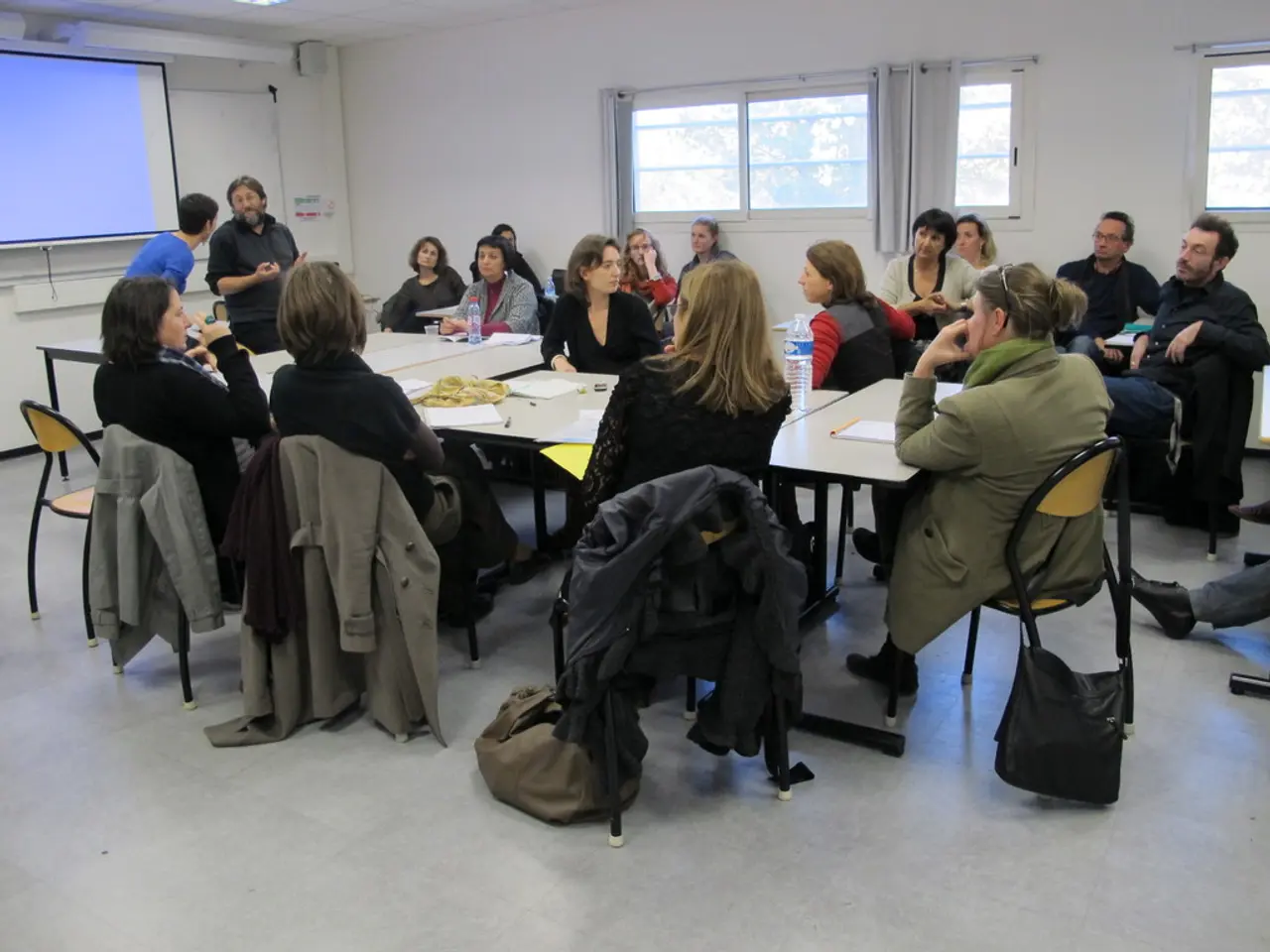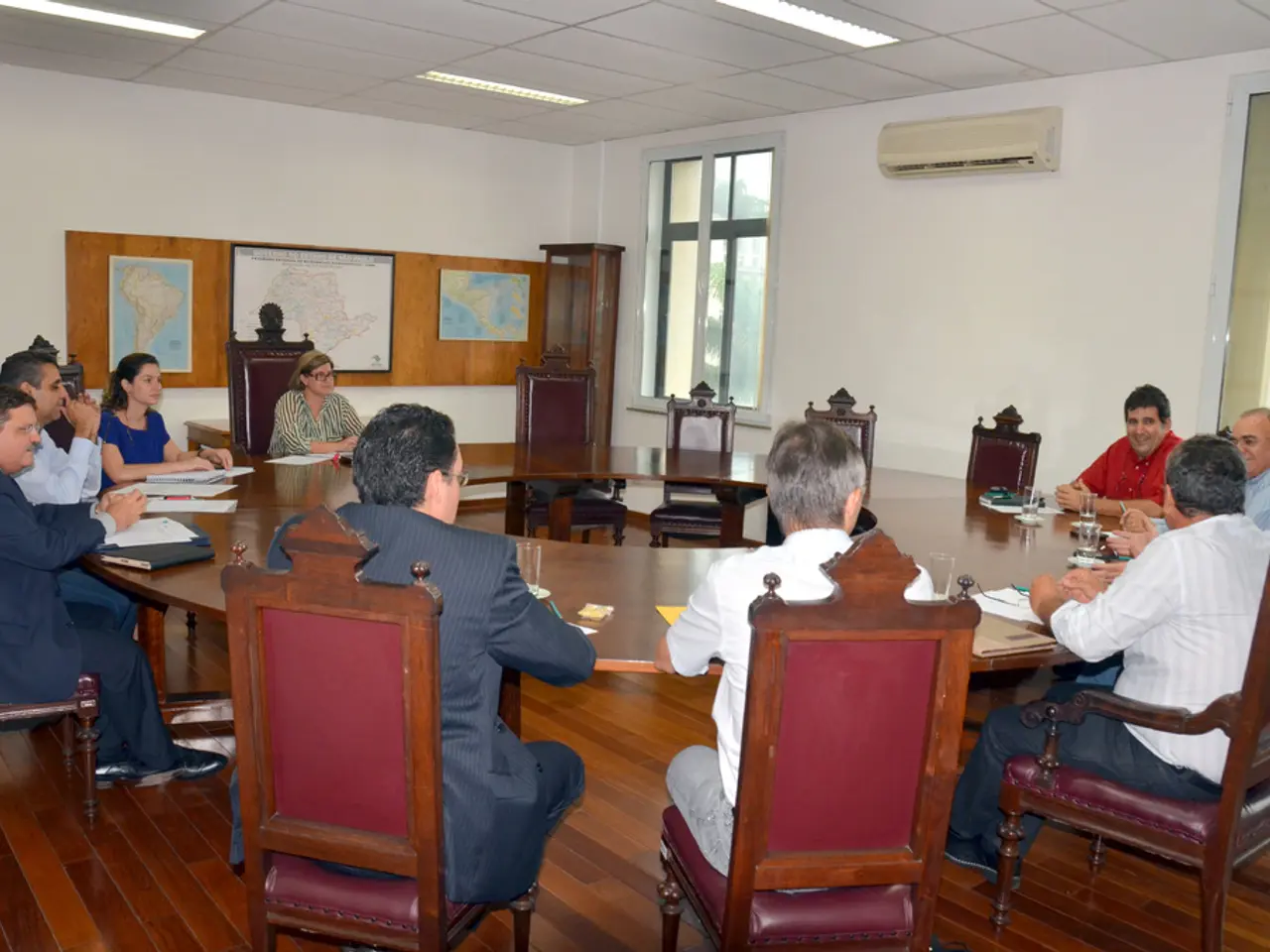Collaborative Discourse Among Alliances
In the realm of community development, coalitions play a pivotal role in bringing together diverse stakeholders to achieve common goals. The art of forming and maintaining these alliances is a delicate balance, requiring effective communication, trust, and engagement among its members.
Forming subcommittees can help a coalition clarify and report on specific issues between meetings. Networking, the exchange of information for mutual benefit, can benefit a coalition via increased member engagement, commitment, and satisfaction. The Ohio Center for Action on Coalition Development published "Building Coalitions: Coalition Formation and Maintenance" in 1992, outlining key strategies for successful coalition building.
Effective communication strategies for coalition building and community capacity development centre on establishing trust, clarity, and engagement among diverse stakeholders. Identifying shared interests and building relationships through transparent, reliable communication helps foster trust and credibility with potential allies. Clearly defining goals and expectations creates alignment within the coalition, helping to avoid misunderstandings.
Fostering open and transparent communication channels encourages inclusiveness, accountability, and regular dialogue, thus nurturing relationships and enhancing coalition strength. Constructive conflict management through established decision-making processes and promoting a culture of empathy and respect is crucial to address disagreements effectively and preserve unity.
Crafting clear, concise, and tailored messages that resonate with diverse audiences within the community or organisation ensures understanding and buy-in. Engaging in active listening helps build mutual trust and refine coalition strategies. Utilising multiple communication channels strategically reaches broader audiences and nurtures engagement in community capacity development. Leveraging storytelling connects emotionally and intellectually with stakeholders, motivating unified action and shared vision within coalitions.
Planning coalition formation carefully by selecting partners with common goals, while maintaining flexibility and openness across party lines, sustains dialogue and avoids adversarial relationships. Balancing efforts between creating a dense, cohesive group and making connections to outside resources is essential to achieve maximum effectiveness.
Resources such as Coalitions Work, The University of Kansas' Community Tool Box, Iowa State University's "Vision to Action: Take Charge Too", and The Asset-Based Community Development Institute offer valuable tools and resources for various coalition processes and evaluation. The University of Wisconsin-Extension provides Logic Model templates and examples for program development and evaluation.
Research studies, like those by Jones and Barry (2011), Kegler and Swan (2012), Valente et al. (2007), and Weiss et al. (2002), have explored the relationship between synergy, partnership functioning, and community capacity, further emphasising the importance of effective communication in coalitions.
Keeping members informed about the policies and actions of the organisation through newsletters and regular meetings can help retain member involvement. Using between-meeting communication can make meetings more productive, especially for large groups.
In essence, successful coalition building enhances community capacity development by aligning diverse groups towards common goals, increasing effectiveness in influence and action. The complexity of coalition communication demands ongoing effort in transparency, mutual respect, and responsiveness to both opportunities and conflicts.
Utilizing scientific research and methodologies, rural development initiatives can implement community-based approaches that promote health-and-wellness among members, thus fostering a holistic community development strategy. Rural coalitions can leverage science-backed strategies and collaboration to tackle shared health concerns, thereby enhancing the overall well-being of the community.
By fostering partnerships between local health organizations, educational institutions, and researchers, rural development coalitions can design and implement health-focused projects that cater to the unique needs of their community members, ultimately contributing to positive community development outcomes.




